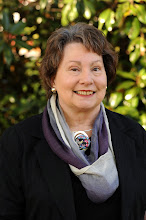King's Mountain Celebration, 2011
| |||
I was asked to speak about the lives of women during the Revolutionary War and set up a table of pewter, wool, knitting, corn husk and church dolls, a butter churn, paddle and mold, etc. This was my version of show-and-tell.
Gourds were used for containers and dippers; today we see them made into clocks or decorative pieces. Someone has called them the natural Tupperware. I believe it helps all of us to both see and touch articles that we aren't familiar with to get a better understanding of their usages.
This butter pat was my husband's great, great grandmother's. Even with much use, you can still tell that one side is flat for patting the butter into the mold. The other side is rounded for allowing the whey to fall back into the crock. Even though my churn is made of crockery, rather than the more typical wood, it shows a different container used during these times.
This butter mold is also a family heirloom that has a carved out design for the presentation top of the butter.
 I showed balls of virgin wool from both lambs and sheep that look and felt quite different. Then I had yarn spun from that same herd of sheep. Lastly, there was a wool blanket, hand made from their wool. The children were quite interested in how long it all took to get from the sheep to the blanket; my only reply was that it took a long time. Does anyone know the approximate length of time from shearing to laying the blanket on the bed?
I showed balls of virgin wool from both lambs and sheep that look and felt quite different. Then I had yarn spun from that same herd of sheep. Lastly, there was a wool blanket, hand made from their wool. The children were quite interested in how long it all took to get from the sheep to the blanket; my only reply was that it took a long time. Does anyone know the approximate length of time from shearing to laying the blanket on the bed? 






0 Comments:
Post a Comment
Subscribe to Post Comments [Atom]
<< Home